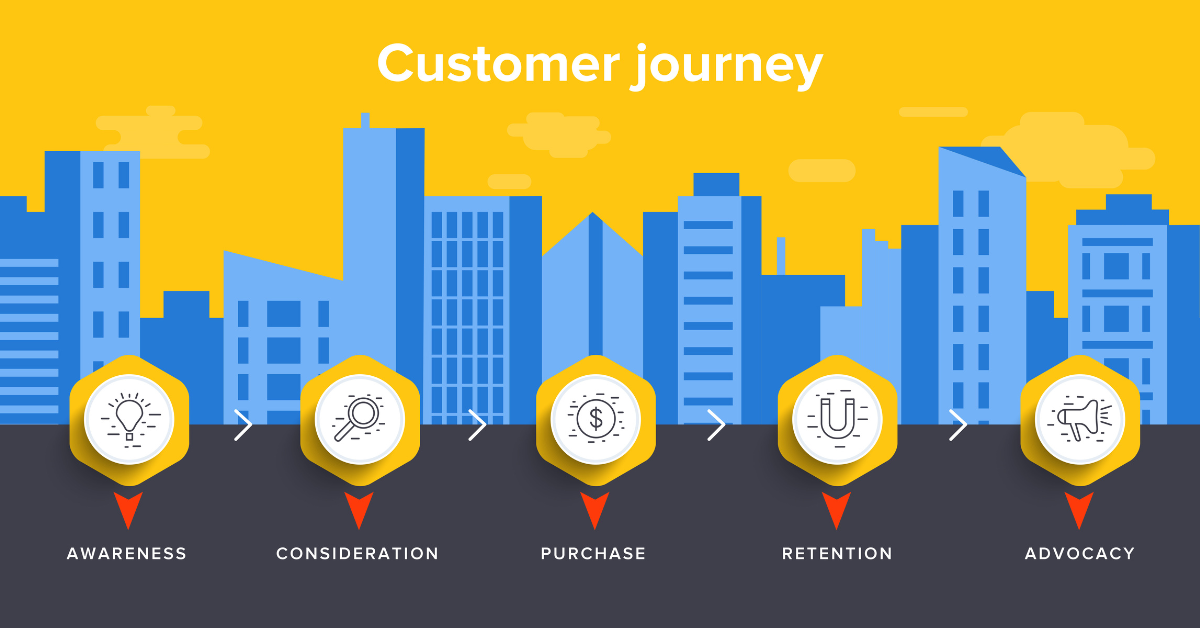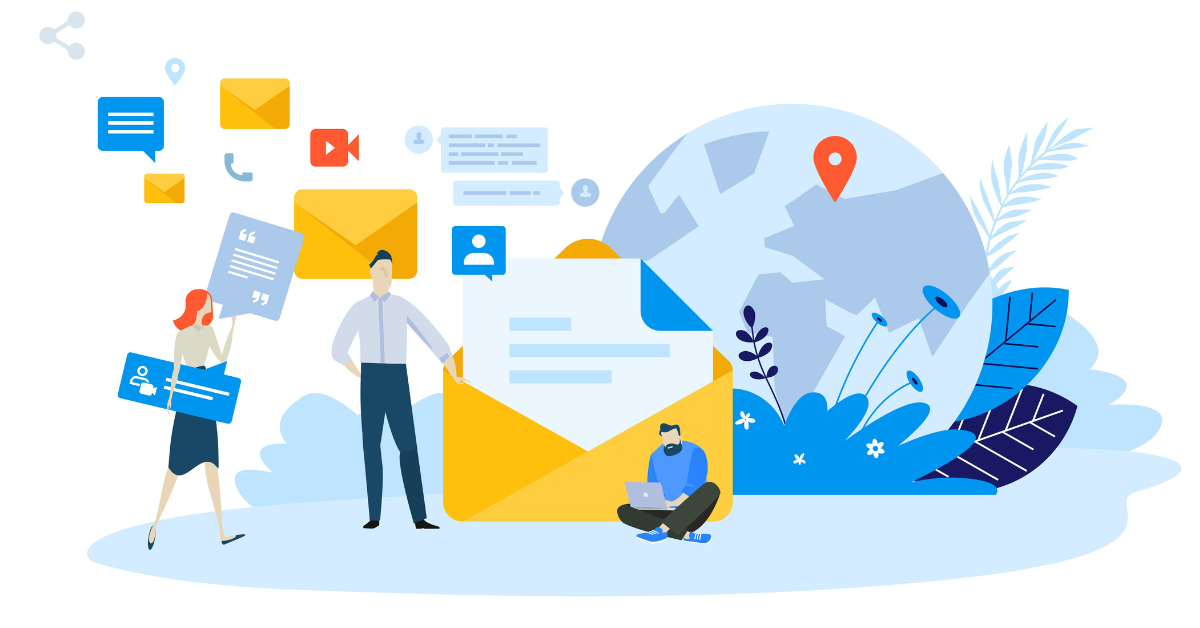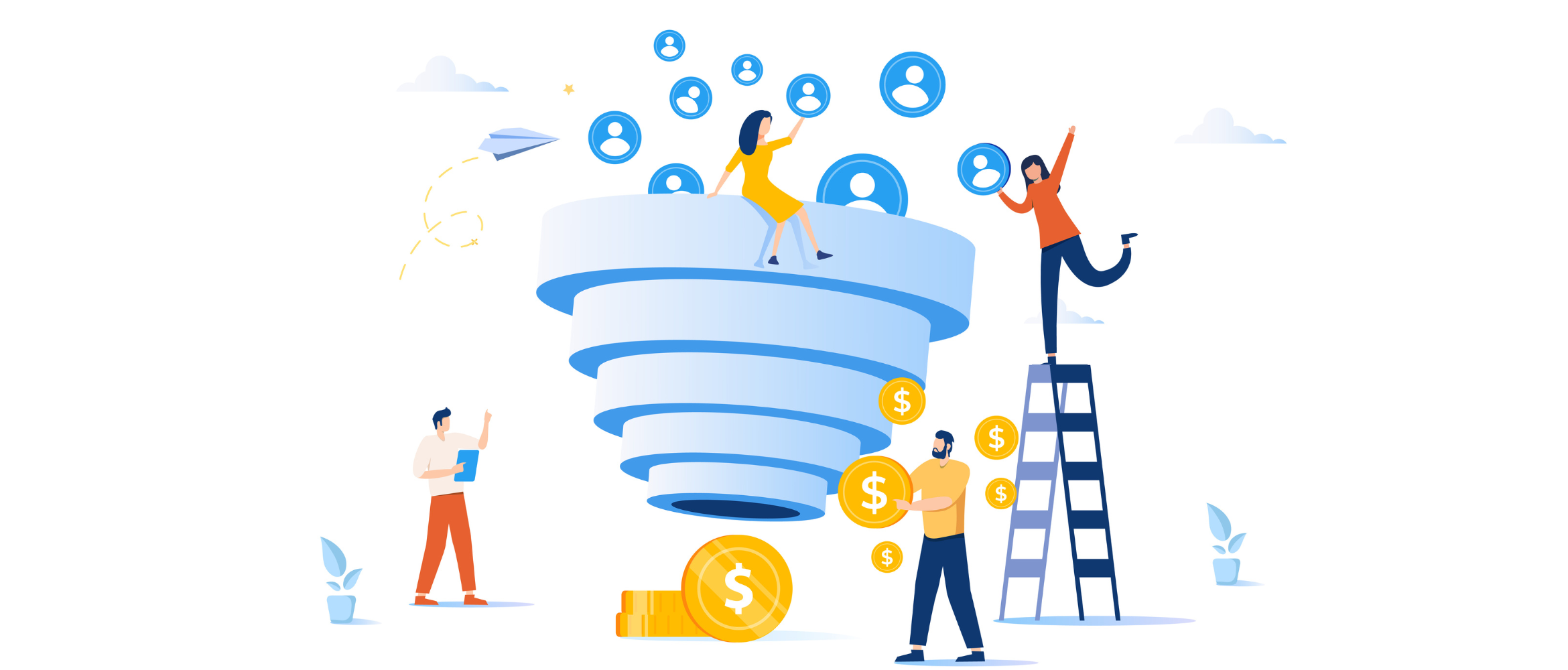Customer lifecycle marketing is the process of leading would-be buyers down the funnel—but it takes strategy and know-how to get it right.
Customers aren't always ready to buy from the get-go. It's like going in for a kiss on the first date.
Slow down, buddy.
Winning customers isn't a one-time tactic. It's an ongoing strategy that involves different stages, and these stages make up effective customer lifecycle marketing.
Nail your touchpoints and timing, and you could earn a customer. Keep up the good work, and you might just create a lifetime buyer.
Yet, the opposite can happen, too.
Botch your timing (like with that first kiss), and you might not get a second chance. You not only lose the sale, but you lose the customer’s lifetime value. That's a lose-lose situation completely avoidable with a better lifecycle marketing strategy.
But don't let the big, scary customer lifecycle marketing buzzword intimidate you—it's not as complex or daunting as it looks. Below, we'll walk you through everything you need to know about lifecycle marketing (stages, strategies, email marketing, automation) to help you seal the deal and win more customers.
Let's get you to first base (metaphorically, of course) with your new customers.
Customer lifecycle marketing is when you lead your potential customers along a journey from unaware of your brand to buyer to brand advocate. It involves mapping out your customer's path and setting up touchpoints along the way to keep your customer progressing through the sales funnel.
Lifecycle marketing includes:
- Mapping the customer’s journey: Everyone's path will be slightly different, but what's the typical buyer's journey for your products? Where do they start? What eventually drives them to make the first-time purchase?
- Establishing the right touchpoints: Once you know your customer's journey, it's time to set up touchpoints along the way. How will they first learn about your brand? How will you interact with them again in the future to get them to consider buying your products? Can you collect their email address or phone number, or will they follow you on social media?
- Navigating the first purchase: It’s an art form trying to push your customer across the purchasing finish line. You might need to work on your sales pitch, pricing, product marketing, or copy—or you might need to dial in your timing.
- Retaining customers: One-time buyers are great, but lifetime buyers are even better. If a customer purchases your product, you don't want them to put it on the shelf or forget about it—you want them to use it. And driving that adoption sometimes takes nurturing.
- Driving repeat purchases: Ideally, you want your customers to buy from you again. And you want them to tell their friends to buy from you, too. Forever.
 Every customer's journey looks different: some need to discover your brand and require nurturing before making a purchase. Others might stumble across your product page for the first time and make a purchase right then and there—it happens.
While every journey looks different, most have a lot in common. The customer lifecycle stages attempt to categorize the typical process a customer goes through—from becoming aware of your brand to making a purchase and beyond.
Here are the customer lifecycle stages:
The awareness stage is where would-be buyers learn about your brand. They might see one of your commercials, glance at an Instagram ad, or read a post on your blog.
At this point, they might not even know what you sell yet, but they can now associate your brand with a meaning or purpose. For example, if your customer wanders onto your blog looking for a recipe, they'll attach food to your brand. If they found your blog while looking for running form tips, they'll associate your business with running.
In this stage in the buyer's journey, they now think of making a purchase—and consider your brand. They're looking at your product or service and competitors to compare features, value, pricing, and more.
This is where your unique selling point comes into play. You differentiate your brand and provide a value proposition that satisfies your customer's needs. If you do this successfully, the customer advances to the third stage.
Here is where your customer adds your item to their shopping cart (virtual or physical) and completes the checkout process. Congratulations! You made a sale.
However, the customer's journey isn't over yet. Remember, you aren’t just trying to make one-time sales. You want them to enjoy their product, rave about it to their friends, and come back and purchase more.
Retention is where you go the extra mile to ensure your customer has a positive post-purchase customer experience. This might include providing them with helpful tips to use your product or even a tutorial. And if the product isn't intuitive, you might even help onboard them with a more hands-on approach.
You could also use a loyalty program to keep your customers coming back for more. In short, give them every excuse to shop with you instead of your competitors.
The advocacy stage is where you transform one-off buyers into loyal customers.
As part of this stage, you might entice your customer to make a repeat purchase. In practice, this might mean sending them a discount code, special offer, or other incentive. Or, you might ask them to share the product with their friends and family in exchange for additional discounts and prizes (aka a referral program).
Now, they’re not just repeat customers—they’ve essentially joined your marketing team.
But remember, the customer lifecycle stages aren't perfect or linear. Sometimes, a customer skips the awareness stage and jumps straight to the purchase stage. Other times, you don't have to execute any customer retention strategies, and your buyer becomes a lifetime advocate.
However, making a game plan sets you up for success and prepares your buyer for a successful journey—regardless of where they hop on board.
Every customer's journey looks different: some need to discover your brand and require nurturing before making a purchase. Others might stumble across your product page for the first time and make a purchase right then and there—it happens.
While every journey looks different, most have a lot in common. The customer lifecycle stages attempt to categorize the typical process a customer goes through—from becoming aware of your brand to making a purchase and beyond.
Here are the customer lifecycle stages:
The awareness stage is where would-be buyers learn about your brand. They might see one of your commercials, glance at an Instagram ad, or read a post on your blog.
At this point, they might not even know what you sell yet, but they can now associate your brand with a meaning or purpose. For example, if your customer wanders onto your blog looking for a recipe, they'll attach food to your brand. If they found your blog while looking for running form tips, they'll associate your business with running.
In this stage in the buyer's journey, they now think of making a purchase—and consider your brand. They're looking at your product or service and competitors to compare features, value, pricing, and more.
This is where your unique selling point comes into play. You differentiate your brand and provide a value proposition that satisfies your customer's needs. If you do this successfully, the customer advances to the third stage.
Here is where your customer adds your item to their shopping cart (virtual or physical) and completes the checkout process. Congratulations! You made a sale.
However, the customer's journey isn't over yet. Remember, you aren’t just trying to make one-time sales. You want them to enjoy their product, rave about it to their friends, and come back and purchase more.
Retention is where you go the extra mile to ensure your customer has a positive post-purchase customer experience. This might include providing them with helpful tips to use your product or even a tutorial. And if the product isn't intuitive, you might even help onboard them with a more hands-on approach.
You could also use a loyalty program to keep your customers coming back for more. In short, give them every excuse to shop with you instead of your competitors.
The advocacy stage is where you transform one-off buyers into loyal customers.
As part of this stage, you might entice your customer to make a repeat purchase. In practice, this might mean sending them a discount code, special offer, or other incentive. Or, you might ask them to share the product with their friends and family in exchange for additional discounts and prizes (aka a referral program).
Now, they’re not just repeat customers—they’ve essentially joined your marketing team.
But remember, the customer lifecycle stages aren't perfect or linear. Sometimes, a customer skips the awareness stage and jumps straight to the purchase stage. Other times, you don't have to execute any customer retention strategies, and your buyer becomes a lifetime advocate.
However, making a game plan sets you up for success and prepares your buyer for a successful journey—regardless of where they hop on board.
 Email marketing isn't the only channel you can use for lifecycle marketing, but we believe it's the best. Why? For a few reasons:
Email marketing isn't the only channel you can use for lifecycle marketing, but we believe it's the best. Why? For a few reasons:
- Opt-in: Email is one of the few opt-in marketing channels. Think about it. Your customers willingly give you their name and email address, then they check a little box saying they want to receive messages from you. You don't get that kind of commitment from any other medium (except for SMS).
- Segmentation: Email marketing software helps you deeply segment your audience, especially when paired with a customer data platform. You can message your customers according to where they’re at in the buyer's journey and create alternate paths for their unique voyage. For example, you can change your marketing messages depending on if they interact with certain pieces of content or alter the approach depending on what they choose to ignore. You can also look at conversion rates, open rates, and other metrics to determine which segment they best fit.
- Personalization: Email helps you send unique messages to each customer. And we’re not just talking about adding their name to the email. We’re talking about serving them specific content tailored to their wants and needs. Or, you can address their problems before they even know they have them—in real time.
- Automation: Email is also a perfect channel for setting your customer lifecycle marketing on autopilot. Build the right lead generation intake, customize the buyer's journey, and let your email programs do the rest. When done right, it can become a hands-off machine for taking buyers through every step of the customer lifecycle stages.
Despite email's dominance, it's not the end-all-be-all solution. Instead of relying on a single channel, we recommend using all the channels for customer lifecycle marketing (starting with email, of course).
For example, you could incorporate SMS into your lifecycle marketing strategy. Or, you might target your customers with a display ad right when they need to see it.
However, your customer's lifecycle journey isn't just in the inbox. Branch out into different channels to meet your customers where they are. Need an all-in-one platform to do it? Choose Twilio (and ignore our bias).
Customer personas are fictional representations of your ideal customers based on research and data. Developing customer personas for each stage of the customer lifecycle is important for several reasons:
- Targeted communication: Different stages of the customer lifecycle involve unique needs, challenges, and motivations. Realistic personas give you insights into the specific characteristics and preferences of customers at each stage.
- Personalization: Personalized marketing is more effective because it makes customers feel understood and valued. Personas provide a deep understanding of your customer's pain points, interests, and behaviors, allowing you to tailor your messaging to better resonate with them.
- Resource allocation: Personas help you focus your efforts on the segments that are most likely to convert, reducing wasted time and marketing money.
- Consistency: Personas ensure that your messaging is consistent across various touchpoints. When you know your personas well, you can maintain a consistent brand voice and message throughout the customer journey.
- Improved customer experience: Delivering relevant content and solutions helps you guide customers smoothly through the lifecycle stages.
Customer personas play an important role in shaping your marketing strategies for each stage of the customer lifecycle:
- Content creation: Personas help you understand the type of content that resonates with each segment. For instance, in the awareness stage, personas might guide you to create informative blog posts or educational videos, while in the engagement stage, you could create personalized case studies.
- Channel selection: Different personas prefer different communication channels. For example, younger audiences might engage more on social media, while older audiences might prefer email.
- Message tailoring: Personas enable you to craft messages that directly address the pain points and aspirations of each segment.
- Offer customization: Personas inform you about the types of products or services that are most appealing to each segment. This allows you to create tailored offers and promotions that cater to their preferences.
- Timing and frequency: Personas provide insights into when and how frequently each segment prefers to receive communications. This prevents overloading customers with irrelevant messages and ensures that your timing aligns with their behavior.
- Lead nurturing: For leads at different lifecycle stages, personas help you design nurturing sequences that guide them toward conversion. This might involve sending different types of content or offers based on their characteristics.
Once you figure out your customer's optimal lifecycle marketing journey, you don't have to manually hold their hand through the entire process. Instead, put your lifecycle marketing strategy on autopilot with email marketing automation.
Don't worry—it's easier than it sounds. We even provide a built-in automation solution for you to do it with Twilio SendGrid.



